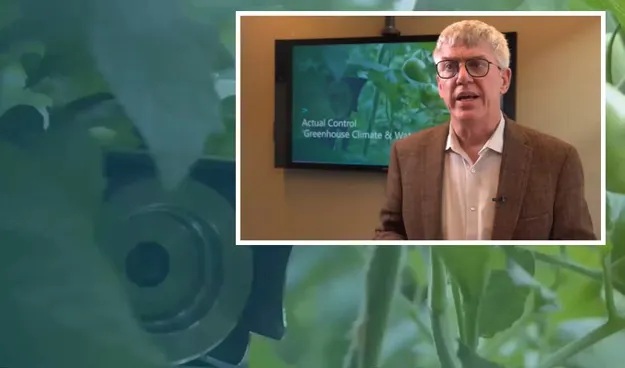Labor costs are rising and are often scarce nowadays. So why not invest in robots or automation solutions? Last year, we published a lot about automation. Below are 10 stories that we published in 2022.

Harvesting robot uses scissors to harvest gerberas
Gerberas are harvested by picking them: the grower pulls on the flower, causing the stem to loosen from the plant. But for a harvesting robot, this is not the best way of working, the Business Unit Greenhouse Horticulture of Wageningen University & Research discovered. For a robot, the best method is to cut the stem by using a gripper with scissors. The harvesting robot for gerberas will be further developed this year.
Using robots and artificial intelligence in greenhouse horticulture
Robotics and AI are not panaceas for solving labor shortages or other product-related problems. But in the next decade, robots and crop-support software are going to take certain tasks out of the hands of the high-tech greenhouse.

"We know the time for this kind of automation is coming"
Finding skilled labor has always been a big challenge for the horticulture sector. This has become an even more pressing problem during these COVID times, with the 'Great Resignation,' also known as the roughly 33 million people in North America only that quit their jobs. This has, of course, impacted horticulture too, making things even more challenging for these large-scale operations that are entirely based on top-notch efficiency. Yet, there are solutions for that.
How developed is automation in greenhouse horticulture?
Drones fly through greenhouses to collect data. The first sorting and packaging robots are introduced. So we are well on our way to fully automating greenhouse horticulture. But how far are we, exactly? Harm van Adrichem of Gearbox discusses his vision for the future.

Think automation isn't for your operation? Think again
Growers are currently facing a wall of challenges that include inflation, labor shortage, supply issues, and shipping bottlenecks, among others. For example, the increased demand for horticultural and ornamental products has delivered record profits, yet labor shortages have left growers struggling to meet this demand. As such, it shouldn't come as a surprise that many growers are exploring how to further automate their processes. But as Derek McLaughlin, marketing manager at Bellpark Horticulture, explains, there are some misconceptions about heavily relying on automation. These misconceptions may dissuade some growers, making it worthwhile to bust these myths now. For context, Bellpark Horticulture is a horticultural automation company providing solutions, parts, and services to North America – so Derek is the perfect person to break these myths down.
"Our goal is to fully automate horticulture, thereby unburdening growers"
Evert van Zanten was born among the greenhouses on Heenweg in the heart of the Westland, the Netherlands' foremost horticultural region, on 12 December 1951. After completing lower horticultural school, he enrolled in higher horticultural school but soon realized that this was not what he wanted. Not being averse to hard work, Eef decided to go to work for a farmer.
"I don't believe in automating just to automate"
It seems like a super simple solution, and actually, it is. "Yet the improvements it brings in terms of labor are substantial," says David Dobos with Blackmore. At the GreenTech show this year, David Dobos with Blackmore showed Air Tray Racks, which they developed together with Dutch company Van Schaik Racking Solutions. These racks enable growers to lower the need for labor in the greenhouse, reduce/eliminate soil-borne disease issues and double the root mass weight.
"We have to involve the crop itself in the automation and the control"
"What we currently do is steer the plant using the environment, but my question is whether that is a good approach. Would it not be better to look at the plant's energy? We have to involve the crop itself in the automation and the control," says Peter Kamp, crop systems innovator at Priva.
"With this potting robot, we are not only more efficient, we can also have more plants in the greenhouse"
Bergcamp Nursey worked together with Degramec to improve the potting process of the nursery. Now they have come up with a solution specifically aimed at the nursery's needs: 'Potting plan 3.0'. Walter van den Berg of Bergcamp nursery and Maarten Acke of Degramec tell us more about it.
Business-driven digital twins in horticulture
Horticulture is increasingly data-driven, and it is ever-more using innovative digital technologies, such as cloud computing, the Internet of Things, machine learning, and robotics, writes Cor Verdouw with Mprise Agriware.






